
Inside the 5th BRLC Cross-border E-Commerce Workshop: Three Days of Digital Commerce Innovation in Hangzhou
Between August 19-21, 2025, I found myself immersed in one of the most intellectually stimulating experiences of my professional journey—the Fifth BRLC Cross-border E-commerce Training Workshop in Hangzhou, China. Organized by the UCLG-ASPAC Committee on the Belt and Road Local Cooperation (BRLC) and UCLG-ASPAC Secretariat, this wasn’t just another conference. It was a carefully orchestrated convergence of over 40 participants from more than 10 countries, each bringing unique perspectives on the rapidly evolving landscape of global digital commerce.
Why I Attended: The Pull of Cross-Border Innovation
As someone deeply invested in understanding how digital infrastructure shapes economic opportunities, particularly in emerging markets, the BRLC workshop represented a rare opportunity. Hangzhou isn’t just any Chinese city—it’s the birthplace of Alibaba, the epicenter of China’s e-commerce revolution, and arguably one of the most advanced digital economy ecosystems in the world. The chance to study cross-border e-commerce mechanics in the very environment where they’ve been perfected was compelling enough. But what truly drew me was the workshop’s emphasis on practical, implementable knowledge rather than theoretical abstraction.
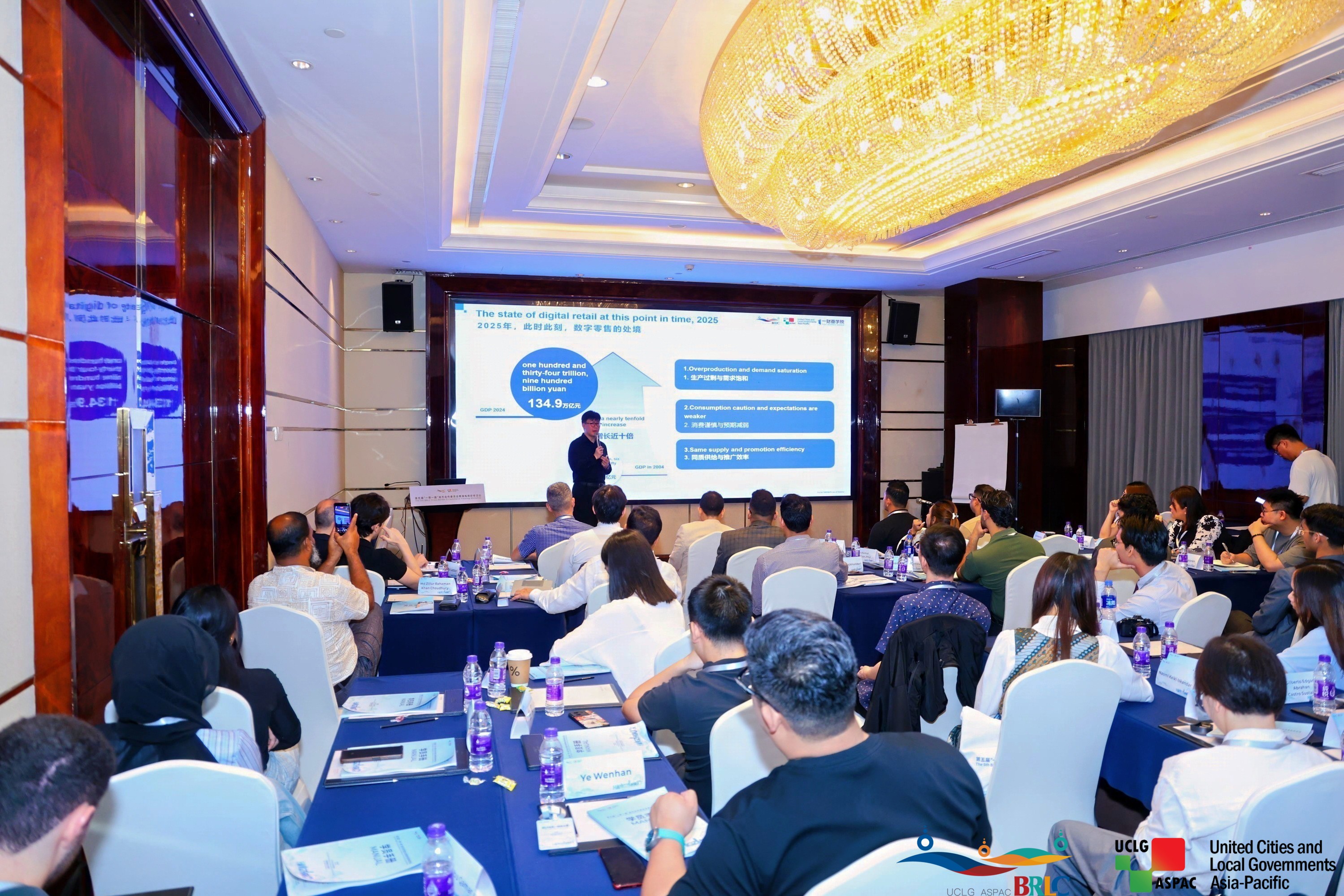
The Participants: A Global Cross-Section of E-Commerce Ambition
What immediately struck me about this workshop was the diversity of attendees. We weren’t a homogeneous group of academics or consultants. The room included representatives from BRLC and UCLG-ASPAC member cities, foreign business organizations based in Shanghai, entrepreneurs already operating businesses in Hangzhou, and representatives from established e-commerce enterprises. This mix created an unusual dynamic—some participants were asking foundational questions about market entry, while others were probing deep into technical optimization strategies for existing operations.
I found myself in conversations with CEOs exploring payment ecosystem integration, tourism professionals investigating digital-physical convergence models, and municipal representatives trying to understand how their cities could replicate elements of Hangzhou’s success. The implicit knowledge exchange happening in hallway conversations and during breaks was often as valuable as the formal sessions themselves.
Alibaba’s Xixi Campus: Where Theory Meets Infrastructure
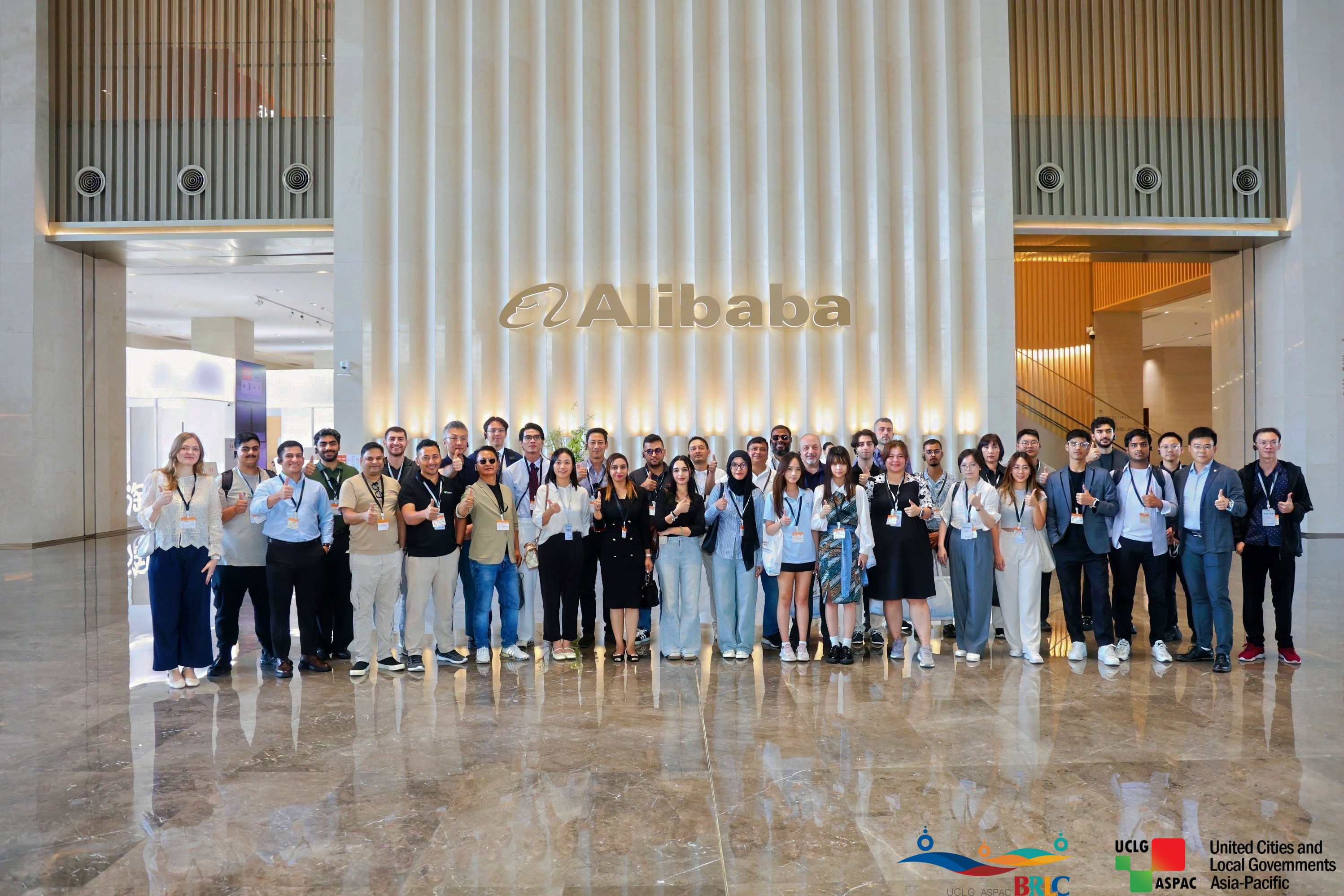
The first major site visit took us to Alibaba’s Xixi Campus, and this is where the workshop shifted from conceptual to tangible. Walking through Alibaba’s operational nerve center, I gained insights that no case study could provide. The campus itself is designed as a physical manifestation of Alibaba’s ecosystem philosophy—interconnected buildings representing different business units, all operating within a unified digital infrastructure.
Technical Architecture Insights
What fascinated me most was understanding the technical architecture underlying Alibaba’s cross-border operations. The discussions touched on:
- Cloud infrastructure scalability: How Alibaba Cloud enables merchants to scale globally without building regional data centers
- Payment gateway integration: The complexity of connecting Alipay with international payment systems while maintaining transaction security and regulatory compliance
- Logistics optimization algorithms: Real-time routing systems that coordinate warehouses, customs clearance, and last-mile delivery across dozens of countries
- Multi-language NLP systems: Natural language processing that handles customer service, product descriptions, and search queries across linguistic boundaries
These weren’t marketing presentations—they were technical deep-dives that revealed the engineering challenges of operating e-commerce at planetary scale. I took extensive notes on their approach to data sovereignty regulations, particularly how they architect systems to comply with varying national requirements on data localization while maintaining operational efficiency.
Lazada Live Streaming Studios: The Future of Social Commerce
The visit to Lazada’s official live streaming studios represented a fascinating counterpoint to Alibaba’s B2B and marketplace focus. Lazada, Alibaba’s Southeast Asian e-commerce platform, has aggressively integrated live streaming into its commerce model, and seeing the production infrastructure firsthand was revelatory.
The Engineering Behind Live Commerce
The studios weren’t amateur setups—they were professional broadcast facilities optimized for commerce conversion. Key technical elements I observed:
- Real-time inventory synchronization: Products featured in streams are linked to inventory systems, preventing overselling during high-traffic broadcasts
- AI-powered engagement analytics: Systems monitoring viewer engagement patterns, chat sentiment, and conversion triggers to optimize presenter behavior in real-time
- Multi-camera production workflows: Sophisticated switching and post-production capabilities that make live streams feel polished rather than improvised
- Cross-platform distribution: Simultaneous streaming to Lazada app, social media platforms, and partner sites with optimized encoding for each
What struck me was how Lazada has industrialized what many Western platforms still treat as creator-driven content. They’ve built systematic processes for talent recruitment, script development, product curation, and performance analytics—turning live streaming from novelty into a predictable revenue channel.
Workshop Sessions: Dissecting China’s E-Commerce Ecosystem
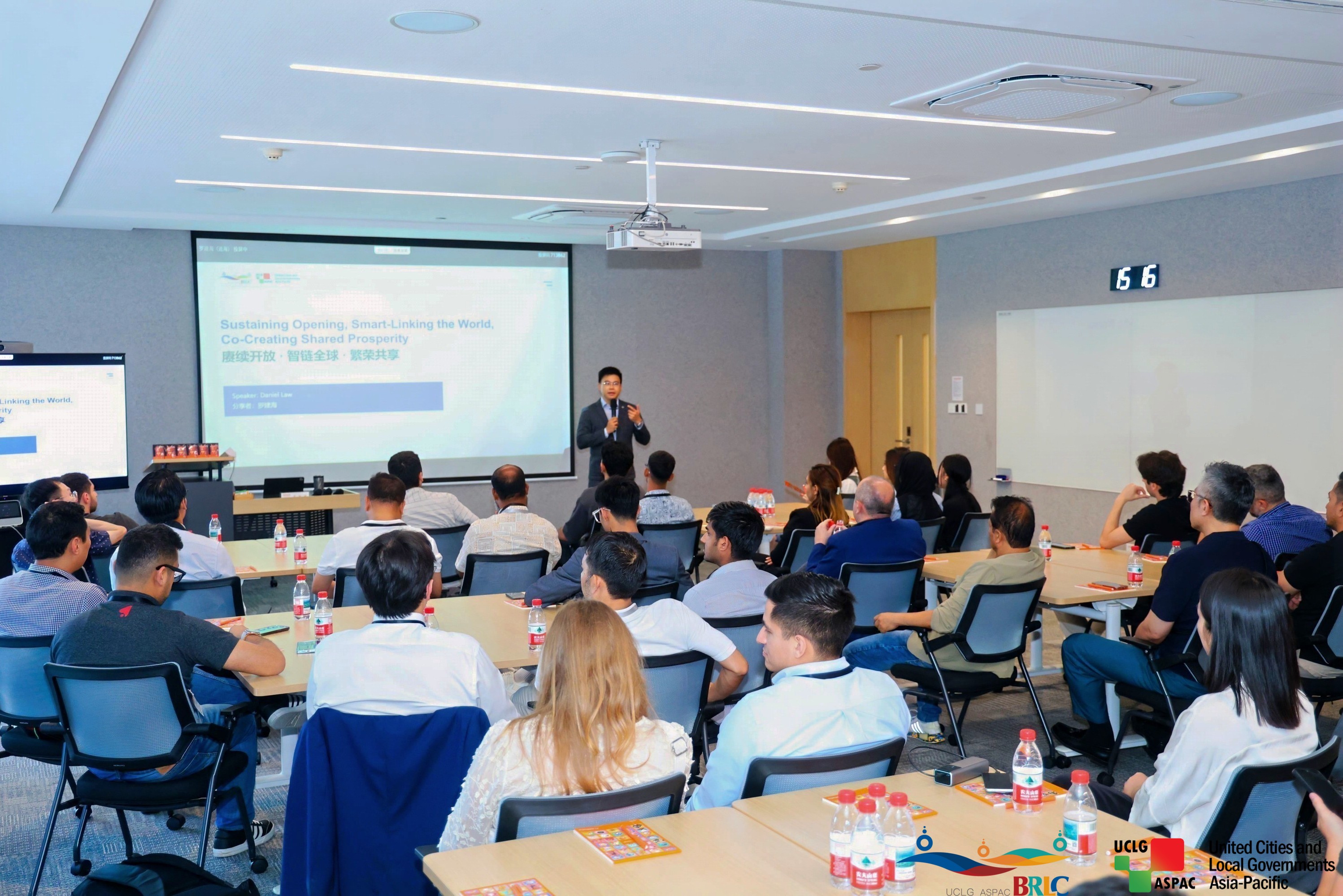
China’s E-Commerce Ecosystem: Beyond the Obvious
The session on China’s e-commerce ecosystem went far beyond explaining how Alibaba or JD.com operate. The facilitators broke down the interconnected layers that make China’s digital commerce environment unique:
- Digital payment ubiquity: How payment infrastructure evolved from cash-dominant to QR-code-based digital payments in less than a decade
- Social commerce integration: The seamless blending of social platforms (WeChat, Douyin) with transaction capabilities
- Regulatory evolution: How China’s approach to platform regulation has shaped merchant behavior and platform architecture
- Rural digitalization: Initiatives bringing e-commerce to smaller cities and rural areas, creating inclusive growth
I was particularly interested in the discussion around “new retail” concepts—Alibaba’s strategy of merging online and offline experiences through technologies like smart stores, automated warehouses connected to physical outlets, and real-time inventory sharing between digital and physical channels.
Global Platform Operations: The Complexity of Going International
This session tackled the operational realities that most entrepreneurs underestimate when expanding internationally. The instructors used case studies from companies that both succeeded and failed in cross-border expansion, analyzing:
- Localization beyond translation: Adapting product selection, pricing strategies, promotional calendars, and customer service approaches to regional preferences
- Cross-border logistics orchestration: Managing inventory across multiple fulfillment centers, optimizing for duty structures, and handling returns logistics internationally
- Regulatory compliance matrices: Navigating different consumer protection laws, tax regimes, data privacy regulations, and product certification requirements
- Currency and payment fragmentation: Dealing with exchange rate volatility, local payment preferences (cash-on-delivery in some markets, digital wallets in others), and cross-border transaction fees
The facilitators didn’t shy away from failure cases—we analyzed several international expansion attempts that collapsed due to underestimating local competition, misreading consumer behavior, or failing to build adequate local partnerships.
AI Applications in E-Commerce: From Hype to Implementation
The AI session was the most technically dense, and refreshingly free of buzzword-heavy marketing. The focus was on practical applications already deployed in production systems:
- Recommendation engines: Moving beyond collaborative filtering to deep learning models that incorporate browsing behavior, seasonal patterns, and contextual signals
- Computer vision for product search: Visual search capabilities allowing customers to photograph items and find similar products
- Chatbot evolution: From rule-based FAQ bots to conversational AI that handles complex queries, product comparisons, and complaint resolution
- Demand forecasting: Machine learning models predicting inventory needs based on historical data, trend signals, weather patterns, and economic indicators
- Dynamic pricing optimization: Algorithms adjusting prices in real-time based on competition, demand elasticity, inventory levels, and business objectives
- Fraud detection systems: Anomaly detection identifying suspicious transactions, fake reviews, and account takeover attempts
What made this session valuable was the honest discussion of limitations—where AI actually delivers value versus where it’s still experimental or overhyped. The presenters emphasized that successful AI implementation requires clean data pipelines, continuous model monitoring, and human oversight for edge cases.
The Broader Context: Hangzhou as Digital Commerce Laboratory

Being in Hangzhou provided context that no remote training could replicate. The city itself functions as a living laboratory for digital commerce concepts. From cashless payment adoption to smart city infrastructure, Hangzhou demonstrates what’s possible when government policy, private innovation, and consumer adoption align.
Walking through the city, I observed the seamless integration of digital services into daily life—QR codes for bike sharing, metro payments via mobile apps, restaurant ordering through mini-programs, and delivery logistics that operate with clockwork precision. This ambient digitalization creates a foundation that makes advanced e-commerce operations possible. You can’t replicate Alibaba’s model without replicating the ecosystem that supports it.
Technical Takeaways: What I’m Bringing Back
Beyond the site visits and sessions, I’ve come away with several technical insights that will shape my thinking about digital commerce:
Infrastructure First, Innovation Second
China’s e-commerce success isn’t primarily about innovative business models—it’s about infrastructure. Reliable digital payment rails, extensive logistics networks, affordable mobile internet, and supportive regulatory frameworks create the foundation. Without these infrastructural prerequisites, even brilliant marketplace ideas struggle.
Platform Ecosystems Over Standalone Products
Successful digital commerce increasingly means building ecosystems rather than selling products. Alibaba doesn’t just run a marketplace—it provides cloud computing, payment processing, logistics services, marketing tools, and financing options. This integrated approach creates switching costs and network effects that standalone e-commerce sites can’t match.
Data as Operational Intelligence
The companies I studied don’t use data merely for marketing optimization—they use it for operational intelligence. Real-time data flows inform inventory positioning, pricing decisions, marketing spend allocation, and product development. This requires significant investment in data infrastructure, analytics capabilities, and organizational processes for data-driven decision-making.
Localization Complexity Compounds Exponentially
Operating in multiple markets isn’t linearly complex—it’s exponentially complex. Each new market adds interactions with existing markets (cross-border shopping behavior, arbitrage opportunities, brand perception spillover) that require sophisticated management. Successful international platforms invest heavily in market-specific operations while maintaining global platform coherence.
Networking and Community Building
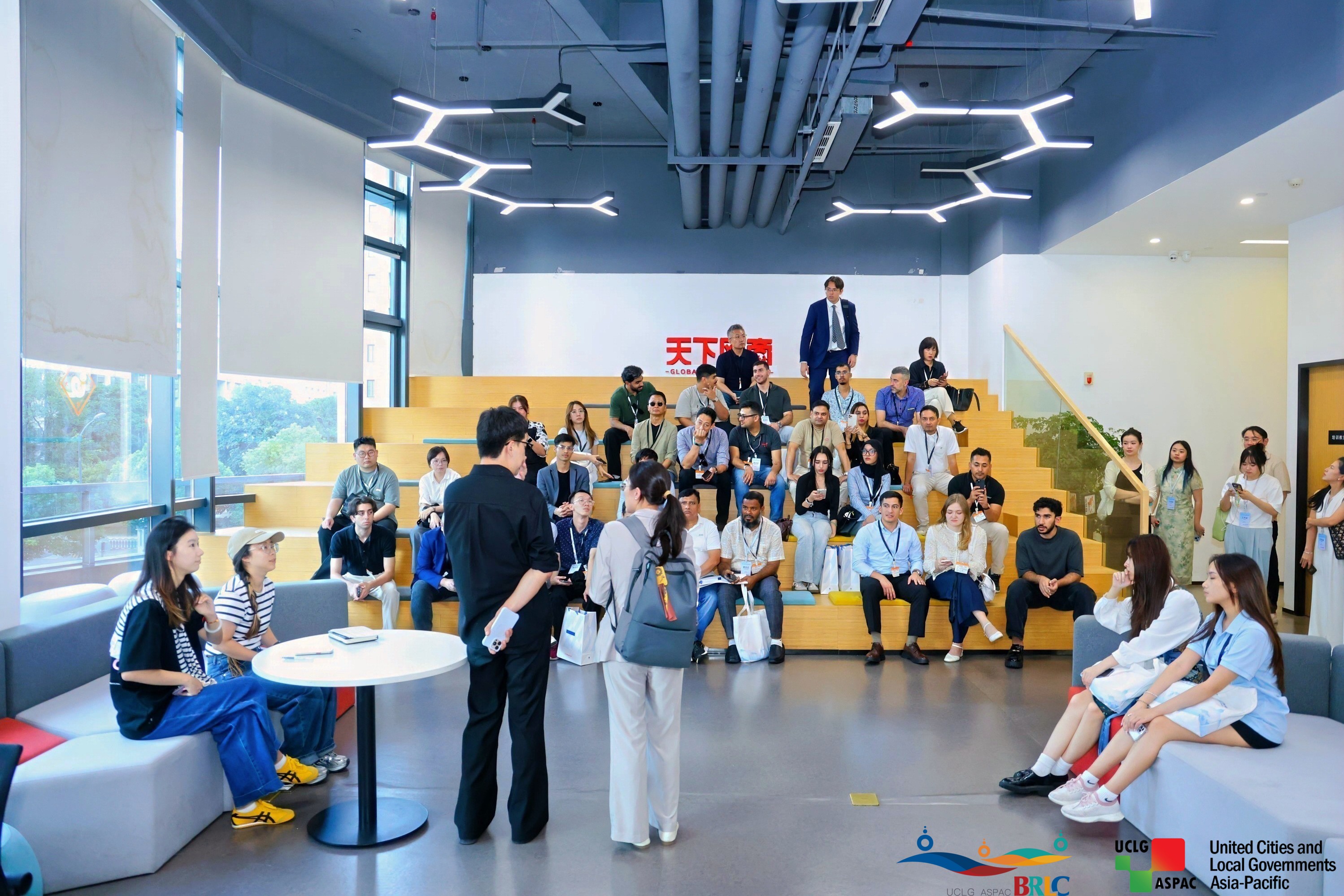
The workshop’s structure facilitated substantial interaction among participants. Shared meals, group site visits, and collaborative exercises created opportunities for informal knowledge exchange. While I didn’t form specific partnerships during these three days, I gained exposure to how professionals from different markets think about e-commerce challenges.
A CEO from Nepal discussed ambitions to integrate Chinese cross-border e-commerce insights into his country’s payment ecosystem. A tourism professional from Malaysia explored how to adapt Hangzhou’s experience combining digital technology with tourism development. These conversations illuminated how universal e-commerce challenges manifest differently across regional contexts—payment infrastructure maturity in South Asia differs fundamentally from Southeast Asia, which differs from East Asia.
What I appreciated was the absence of vendor pitches or sales agendas. Participants came to learn, not to sell, which created an unusually open environment for discussing both successes and failures.
Reflections: What Makes This Workshop Valuable
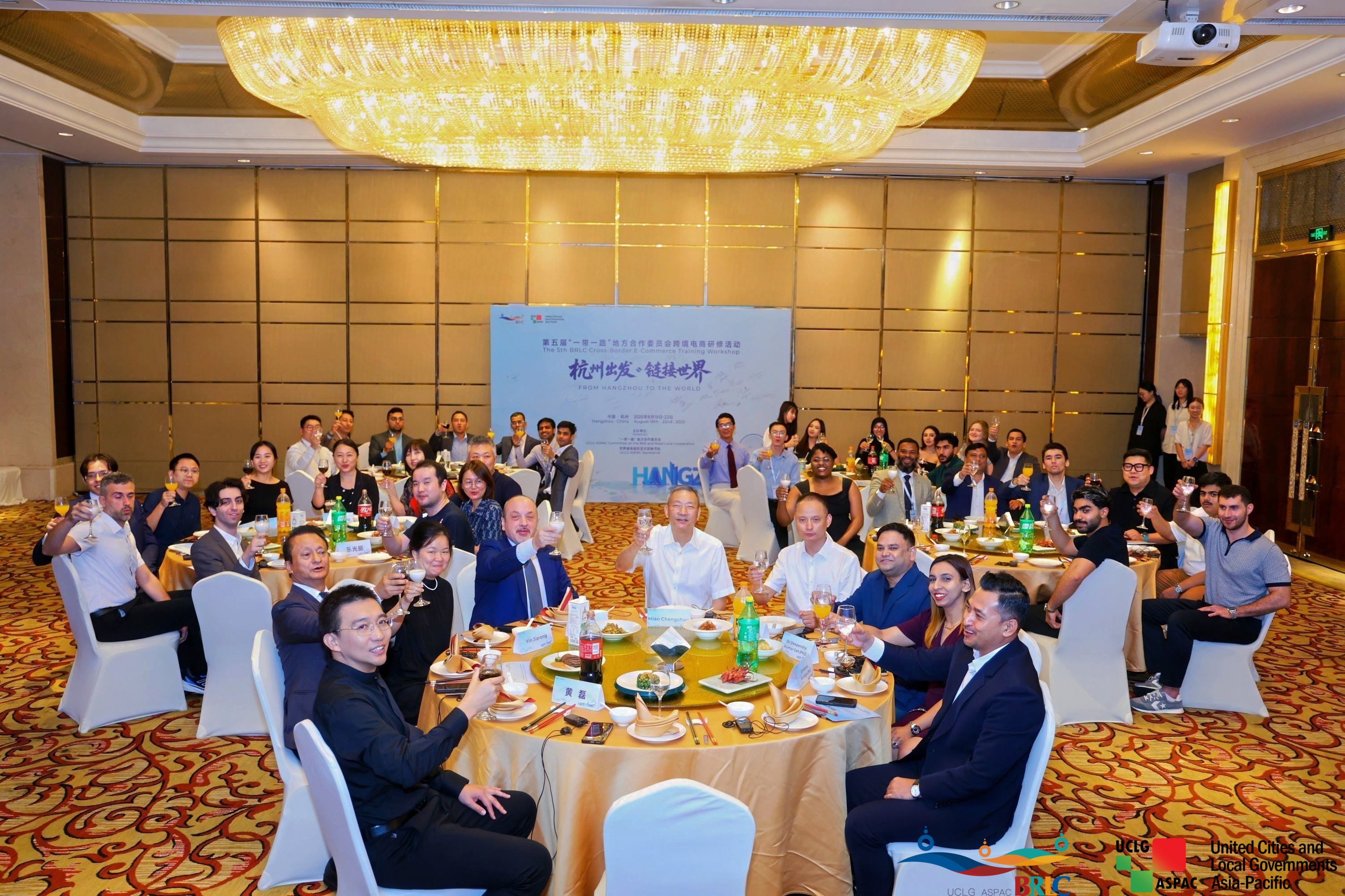
At the closing ceremony, Miao Chengchao, Vice President of the BRLC, emphasized the importance of applying workshop insights in practice. This emphasis on implementation distinguishes this program from purely academic training or consultant-led seminars.
Several factors made this workshop particularly valuable:
Access to Operational Environments
Visiting Alibaba and Lazada facilities provided ground truth that supplements theoretical knowledge. Seeing infrastructure, talking with operators, and understanding workflows beats reading case studies.
Practitioner-Led Content
Sessions were led by people who actually build and operate e-commerce systems, not consultants who advise about them. This meant discussions focused on real constraints, tradeoffs, and solutions rather than idealized models.
International Peer Learning
Being surrounded by professionals from diverse markets created peer learning opportunities. Hearing how others approach similar problems with different constraints sparks insights that homogeneous groups rarely generate.
Contextual Understanding
Being in Hangzhou—physically experiencing the digital ecosystem—provided context for understanding how e-commerce strategies emerge from specific environmental conditions rather than pure innovation.
The BRLC’s Long-Term Vision
This workshop represents the fifth iteration since 2018 of BRLC’s international e-commerce training program. The evolution over seven years reflects growing international interest in understanding China’s digital commerce models. What started as a niche program has attracted increasing numbers of young professionals worldwide seeking to understand cross-border e-commerce dynamics.
The consistent location in Hangzhou is strategic—it provides continuity and allows the program to leverage established relationships with Alibaba, Lazada, and other local e-commerce actors. This institutional continuity enables depth that one-off events cannot achieve.
Looking Forward: Implementation Challenges
As I reflect on the workshop, the critical question becomes: how do insights from China’s highly developed e-commerce ecosystem translate to different contexts? China’s model emerged from specific conditions—large domestic market, rapid mobile adoption, supportive industrial policy, substantial technology investment, and consumer willingness to adopt digital services.
Translating these lessons to markets with different characteristics requires careful adaptation. Not every market can support Alibaba-scale platforms. Not every regulatory environment will permit data-intensive personalization. Not every logistics infrastructure can enable same-day delivery. The challenge is extracting transferable principles rather than attempting direct replication.
Key transferable insights include:
- The importance of mobile-first design given global smartphone adoption
- The value of integrated ecosystems over standalone services
- The necessity of solving payments and logistics before scaling marketing
- The role of live streaming and social commerce in engaging consumers
- The application of AI to operational problems beyond marketing optimization
Conclusion: The Value of Immersive Learning
The 5th BRLC Cross-border E-Commerce Workshop exemplifies the value of immersive, practitioner-led professional development. Three days in Hangzhou provided more applicable insights than months of reading articles or attending webinars. The combination of site visits, technical sessions, and peer interaction created a learning environment that addressed the complexity of cross-border e-commerce without oversimplifying it.
For professionals working in digital commerce, international trade, technology implementation, or economic development, programs like this offer rare access to operational knowledge and contextual understanding. They bridge the gap between theoretical models and messy reality, between what consultants recommend and what actually works.
As e-commerce continues evolving—with AI integration, social commerce growth, and cross-border expansion—understanding how leading markets approach these challenges becomes increasingly valuable. The BRLC workshop provides that understanding, not through abstract lectures, but through direct exposure to the systems, infrastructure, and thinking that drive China’s digital economy.
I left Hangzhou with full notebooks, numerous photos, and significantly expanded understanding of cross-border e-commerce mechanics. More importantly, I left with a framework for thinking about how digital commerce systems can be built, scaled, and adapted across different market contexts. That framework will inform my work far beyond these three days in August 2025.
The 5th BRLC Cross-border E-Commerce Workshop was held August 19-21, 2025, in Hangzhou, China. Organized by the UCLG-ASPAC Committee on the Belt and Road Local Cooperation (BRLC) and UCLG-ASPAC Secretariat, the program has trained professionals from around the world since 2018.